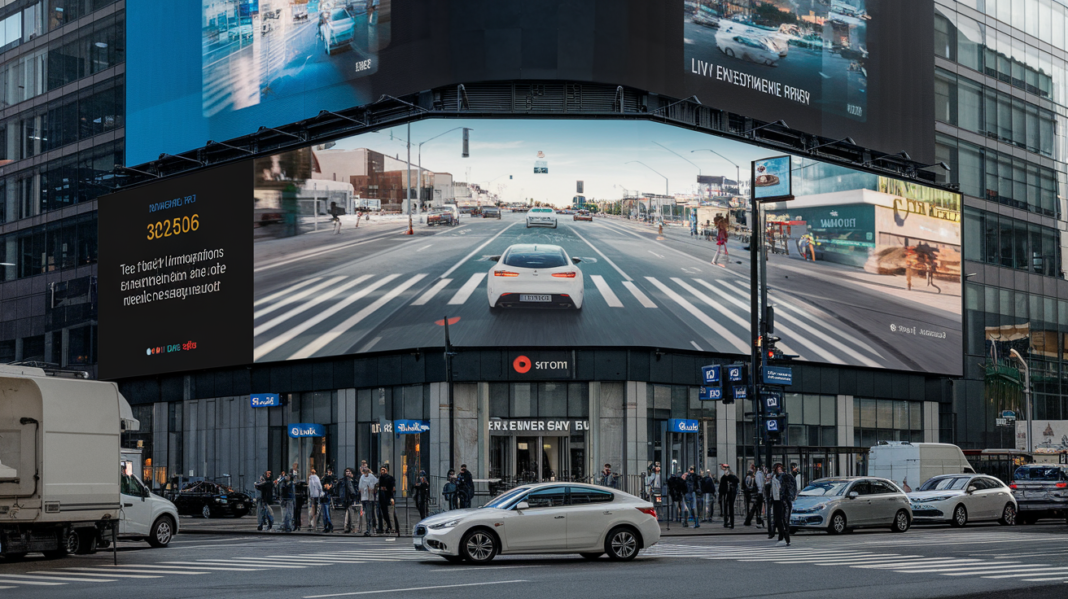In the ever-evolving landscape of marketing, out-of-home (OOH) marketing strategies are gaining traction as brands seek new ways to reach their audiences. As we look toward 2024, technology is playing a crucial role in shaping the future of out-of-home marketing. This article explores the latest innovations that are transforming how brands connect with consumers outside of traditional digital spaces.
The Shift Toward Digital Solutions
The transition from traditional to digital has marked a significant change in out-of-home marketing solutions. Digital billboards and interactive displays are becoming commonplace, allowing for dynamic content that can be easily updated. This adaptability not only captures attention but also enhances the ability to tailor messages to specific audiences.
With the rise of programmatic advertising, advertisers can now leverage data to optimize their campaigns in real-time. This technology allows brands to deliver targeted messages based on various factors, such as location, time of day, and audience demographics. As a result, advertisers can ensure their messages are more relevant and timely, increasing engagement with their target audience.
Data-Driven Decision Making
Data analytics has become a cornerstone of effective out-of-home marketing strategies. By harnessing data from multiple sources, marketers can gain valuable insights into consumer behavior and preferences. These insights enable brands to make informed decisions about where and when to display their advertisements.
For instance, the integration of geolocation data allows brands to understand foot traffic patterns in specific areas. This information helps advertisers identify high-traffic locations and optimal times for their campaigns. By utilizing this data, brands can strategically place their advertisements in locations that maximize visibility and impact.
The Rise of Interactivity
Interactive elements are increasingly being incorporated into out-of-home marketing strategies, creating more engaging experiences for consumers. Interactive displays allow potential customers to engage directly with the content, fostering a connection between the brand and the audience.
For example, some digital billboards now feature touchscreens that enable users to access additional information, participate in games, or even make purchases directly from the advertisement. This level of interactivity not only captures attention but also encourages deeper engagement with the brand.
Augmented Reality in Advertising
Augmented reality (AR) is another innovative technology that is reshaping out-of-home marketing. AR allows brands to overlay digital content onto the physical world, creating immersive experiences that resonate with consumers. For instance, a consumer might point their smartphone at a digital billboard and see an animated version of a product or an interactive game related to the brand.
By incorporating AR into their advertising strategies, brands can create memorable experiences that stand out in a crowded marketplace. This technology not only entertains consumers but also provides valuable information about the brand or product, enhancing the overall advertising impact.
Sustainability and Eco-Friendly Initiatives
As environmental awareness continues to grow, sustainability is becoming an essential consideration in marketing strategies. Brands are increasingly adopting eco-friendly practices in their out-of-home marketing efforts. This includes using sustainable materials for billboards and displays, as well as implementing energy-efficient technologies.
Brands that prioritize sustainability in their advertising strategies not only appeal to environmentally conscious consumers but also enhance their brand image. This approach can differentiate a brand from its competitors, attracting a loyal customer base that values sustainability.
The Integration of Social Media
Social media platforms are becoming an integral part of out-of-home marketing strategies. Brands are leveraging social media to amplify their out-of-home campaigns and engage with audiences in real-time. For instance, live social media feeds can be displayed on digital billboards, encouraging consumers to interact with the brand online.
This integration allows brands to create a seamless connection between their online and offline marketing efforts. By encouraging consumers to share their experiences on social media, brands can extend the reach of their campaigns and foster a sense of community around their products or services.
The Future of Out-of-Home Marketing
As we move into 2024, the future of out-of-home marketing looks promising. The continuous advancement of technology will undoubtedly lead to further innovations in the industry. Brands that embrace these changes and adapt their strategies accordingly will be well-positioned to capture consumer attention in an increasingly competitive landscape.
Incorporating data analytics, interactive elements, and sustainability into out-of-home marketing strategies will be key for brands aiming to stand out. Additionally, collaborating with an outdoor advertising agency can provide valuable expertise in navigating the complexities of the evolving market.
The integration of technology into out-of-home marketing is transforming how brands connect with consumers. By leveraging the latest innovations, brands can create more engaging and effective advertising campaigns that resonate with their target audiences. As we look ahead, staying attuned to these trends will be essential for brands aiming to thrive in the dynamic landscape of out-of-home marketing.



